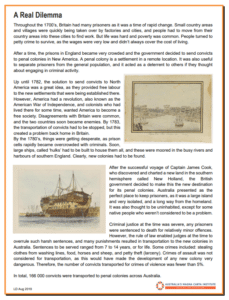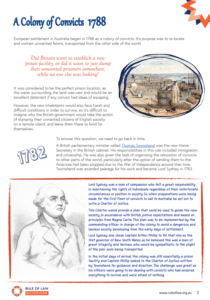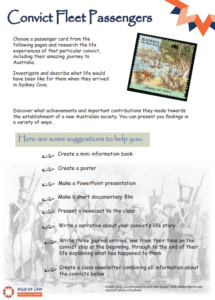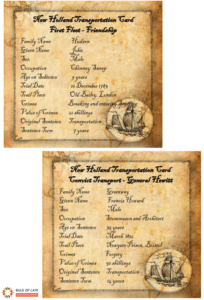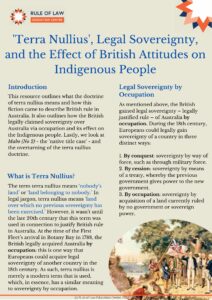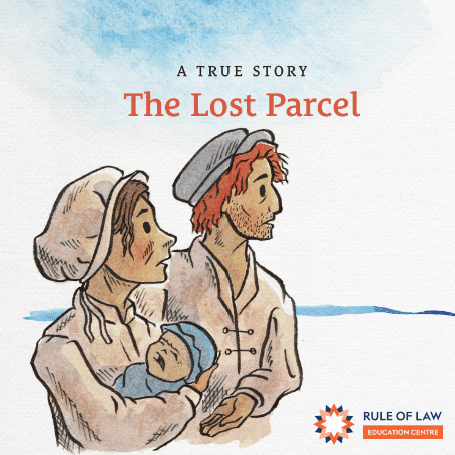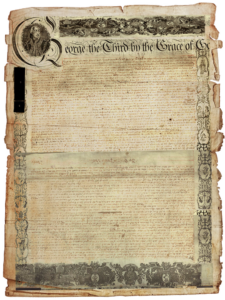Australian Colonies and the Development of the Rule of Law in Australia
According to the Australian Government’s Department of Home Affairs: Australian values based on freedom, respect, fairness and equality of opportunity are central to our community remaining a secure, prosperous and peaceful place to live. Our values define and shape our country and they are a reason why so many people want to become Australian citizens. Our democratic institutions and shared Australian values have created our peaceful and stable society.
These democratic institutions and values did not appear by chance but were developed over more than 200 years on Australian soil and over 800 years from England stemming back to the Magna Carta.
These institutions are not static nor for the protection of one group of people. They are grounded in the rule of law, where all people no matter their background, race, wealth, religion or gender are provided with equal and fair access to the protection of the law and their human rights.

An Ancient People
Aboriginal and Torres Strait Islander Peoples were residents of Australia long before European settlement in 1788. Their history dates back over 50 000 years ago. They were a culture of many nations, each one with established customs and traditions of their own. They developed laws and social rules that maintained kinship obligation and ancient stories of the Dreamtime preserved the traditional culture and beliefs. Different and unique language groups identified individual indigenous nations across the land. Click here for our more information.
A Penal Colony
How the English dealt with those sentenced to transportation to the Americas
The successful voyage of Captain James Cook resulted in the discovery of a great vast land in the southern hemisphere.
As a form of punishment, the Courts in England would sentence criminals to transportation to the Americas. After the American Revolution against the English, the United States of America refused to accept any more convict transports. The British Government needed to find a new location to send those sentenced to transportation and they decided to establish a penal settlement in Australia. This new land was an isolated island a long way from home, providing the perfect deterrent for any convict who harboured thoughts of escape.

Who was responsible for planning the new penal colony? Lord Sydney!!
In 1780’s, the British parliamentary minister called Thomas Townshend was the Home Secretary in the British cabinet. His responsibilities in this role included immigration and citizenship. He was also given the task of organising the relocation of convicts to other parts of the world, particularly after the option of sending them to the Americas had been stopped due to the War of Independence around that time.
Townshend was awarded peerage for his work and became Lord Sydney in 1783. It is under this title, Lord Viscount Sydney, that the city of Sydney in New South Wales, Australia was named after!! 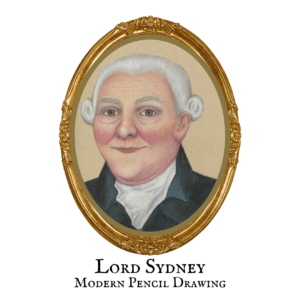
Lord Sydney was a man of compassion who felt a great responsibility in maintaining the rights of individuals, regardless of their unfortunate circumstances or position in society. So, when preparations were being made for the First Fleet of convicts to sail to Australia, he set out to write a Charter of Justice. This Charter would provide a plan that could be used to guide the new society, in accordance with British justice expectations and based on principles from Magna Carta. This plan was to be implemented by the commanding officer in charge of the colony to avoid a dangerous and lawless society developing from the early days of settlement.
Click here to learn more about Lord Sydney, the man that the city of Sydney is named after.
Arthur Phillip and the First Charter of Justice
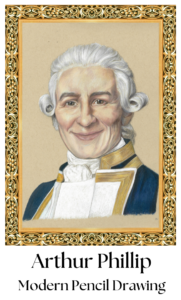 Lord Sydney also chose Captain Arthur Phillip to fill the role as the first governor of New South Wales, as he believed he was a man of great integrity and fairness who would be sympathetic to the plight of those being transported.
Lord Sydney also chose Captain Arthur Phillip to fill the role as the first governor of New South Wales, as he believed he was a man of great integrity and fairness who would be sympathetic to the plight of those being transported.
In the initial days of arrival, the colony was still essentially a prison facility and Captain Phillip looked to the Charter of Justice written by Townshend for guidance and direction. The challenge was great as his officers were dealing with convicts who had endured everything to survive and were afraid of nothing.
The Charter of Justice was first established on January 26, 1788 when Governor Arthur Phillip landed in Botany Bay. It left some traditions of the old British legal system such as how the common law would be implemented, but also included the new ideas about freedom of liberties and individual rights, that were still emerging throughout the 18th century. Some traditions needed to be changed in order to cater for the challenging society that was being established.
It was not going to be like the British class system of entitlement; such as first class, second class, and the peasants and it was not going to be society based upon slaves like Sydney had seen in South America.
Governor Phillip endeavoured to administer principles in fairness, justice, and supporting individual freedoms as the fledgling society developed in harsh conditions.
Terra Nullius: Gaining Sovereignty 
The British claimed sovereignty over Australia by occupation, as they believed the land was not ruled by anyone. Although a term not used at the time, we now describe this as terra nullius (land belonging to nobody). This basis was the justification for European occupation without a treaty with the indigenous peoples of the land.
In 1992, the High Court of Australia overturned the notion that Australia was uninhabitated in a decision known as Mabo.
Click here to learn more.
The First Civil Case in the Colony
The first civil case in New South Wales was held on 1 July 1788 (Cable v Sinclair [1788] NSW KR 7, Court of Civil Jurisdiction). In this case, a poor convict couple used the English legal system, established by the First Charter of Justice to sue the mighty ship’s captain for their parcel that was lost in the First Fleet.
This case set the democratic foundations of Australia, that the law must be applied equally and fairly to all, and people should have equal access to the protections provided by the law.
To learn more about this case click here.
The Rule of Law Under the first 5 Governors in NSW
The first five governors of New South Wales were instrumental in the development of Australia since Europeans arrived on the First Fleet in 1788. Governors Arthur Phillip, John Hunter, Philip Gidley-King, William Bligh, and Lachlan Macquarie were given the momentous task of establishing and managing the development of a new British society on the other side of the world.
Each one struggled to rule the new colony in a rapidly changing and dangerous environment.
Their challenge was to establish a new colony with the unwanted felons who were rejected by British society.
Click on an image to go to each section
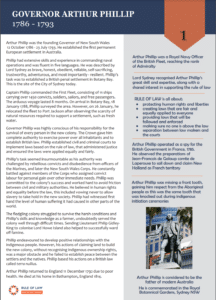 |
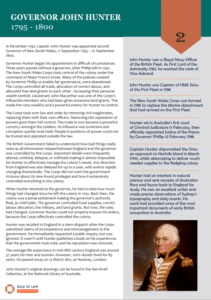 |
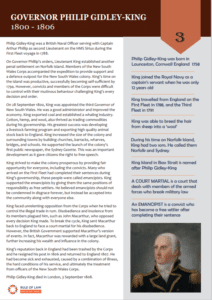 |
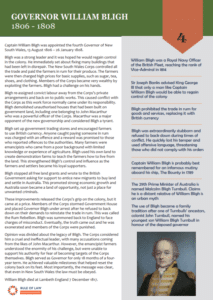 |
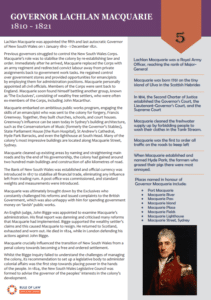 |
| Arthur Phillip | John Hunter | Philip Gidley-King | William Bligh |
Lachlan Macquarie |
Read this great article from ABC News: Five Surprising things about Arthur Phillip, the first Governor of NSW
https://www.abc.net.au/news/2015-06-30/arthur-phillip-five-surprising-things/6580852
Test your Knowledge of the early days of the European Settlement
Colonial Capers! is a fun way for your students to develop their knowledge and understanding about the contribution of past people, who have shaped the course of Australian history, and learn about the nature of history from key changes that have occurred in the past. This quiz game can be used as a diagnostic resource to introduce the topic of European settlement, or it can be a useful assessment tool to complement the study of European settlement in Australia. This resource will enable teachers to play the game with their class. Questions are presented in a way where your students can easily see all components for each question. Answers can be found by discovering clues presented in the question, or are easily identified by using logic.
PART 1 – the teacher’s edition. It’s got all the answers!
Colonial Capers GAME Part 1
PART 2 – Colonial Capers SMARTBOARD Quiz
Colonial Capers SMARTBOARD QUIZ Part 2
————————————————————
The Supreme Court of NSW and the Third Charter of Justice
Following the Bigge Reports in 1822 and 1823, the establishment of the NSW Supreme Court was proclaimed by Governor Brisbane on 17 May 1824. The New South Wales Act 1823 (UK), together with the Letters patent, formed the legal basis of the NSW Supreme Court known as the Third Charter of Justice. The establishment of the Supreme Court was for the better administration of justice in the colony and was to become an important check on the power of those in government.
The first Chief Justice of the NSW Supreme Court was Francis Forbes who saw his role as a check on the arbitrary use of power and authority and famously wrote ‘the judicial office stands uncontrolled and independent, and bowing to no power but the supremacy of the law.’
Click here to learn more.
————————————————————
The Eureka Rebellion and Human Rights
Eureka Rebellion
On 3rd December 1854, gold miners in the town of Eureka, near Ballarat, Victoria stood against colonial forces. The miners had captured the government’s attention, and of the Australian people around the nation, in their struggle against an oppressive government. By the end of the decade, in response in part to Eureka, colonial authorities had finally begun to recognise that government needed to be run by the people, for the people.
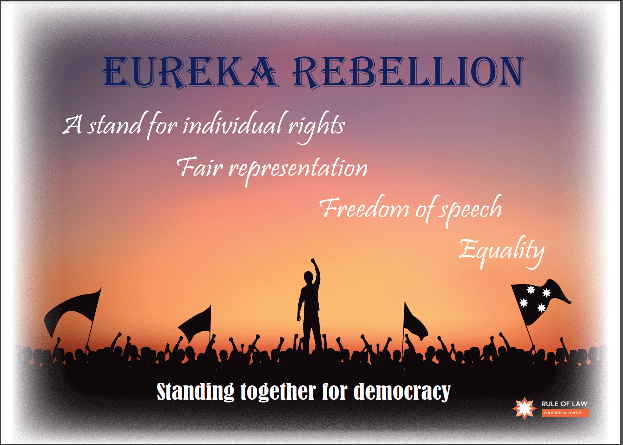
Eureka was the moment a democratic movement seized control of the political agenda by asserting its rights. A time when the people demanded equal and fair treatment, and the right to take part in the democratic process.
Click here to learn why the Eureka Rebellion was important and its contribution to democracy in Australia.
Click the below images to go to each section:
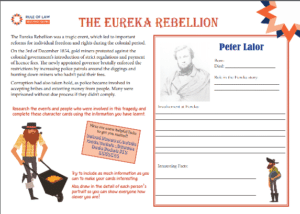


Eureka Character Cards Eureka Chatterbox Eureka Debate
————————————————————
Downloads
An Ancient People
A Real Dilemma
terra nullius
Convict Fleet Passengers
A Colony of Convicts 1788
The Governors COVER
Lord Viscount Sydney
Governor Arthur Phillip
Governor John Hunter
Governor Philip Gidley-King
Governor William Bligh
Governor Lachlan Macquarie
Colonial Capers GAME Part 1
Colonial Capers SMARTBOARD QUIZ Part 2
EUREKA
Victorian Democracy Timeline
Eureka Character Cards
John Bassom Humffray
Eureka Debate
Eureka Chatterbox GAME
Eureka Rebellion POSTER

